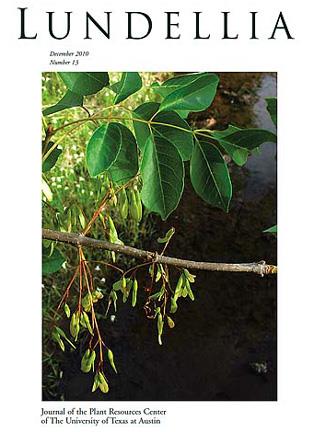The abaxial leaf surfaces of Fraxinus in the southwestern USA and northwestern Mexico are sometimes white-glaucous and have been described as “papillose.” Individuals exhibiting this morphology have been identified as F. papillosa, a species reported from Arizona, New Mexico, Texas, and Mexico. In the original description of F. papillosa, its leaf epidermal structure was compared to F. americana L., but the abaxial surface morphology of F. papillosa is distinctly different from that of F. americana. In the latter, a cuticular reticulum overlays the epidermis and partially obscures it, while the abaxial surface of F. papillosa is similar to that of F. velutina in its lack of a cuticular overlay. In F. papillosa each epidermal cell is abruptly convex or folded upward into a papilla-like structure, compared to the relatively flat-surfaced cells of F. velutina—intergradation occurs but whether the two are appropriately considered conspecific remains to be determined. SEM photographs of the abaxial leaf surface morphology of F. papillosa, F. velutina, and other species that are similar to F. papillosa are provided.
How to translate text using browser tools
1 December 2010
The Status of Fraxinus papillosa (Oleaceae): Sem Study of Epidermal Features
Justin K. Williams,
Guy L. Nesom
<
Previous Article
|

Lundellia
Vol. 2010 • No. 13
December 2010
Vol. 2010 • No. 13
December 2010
F. americana
F. velutina
Fraxinus papillosa
leaf epidermis
scanning electron microscopy




